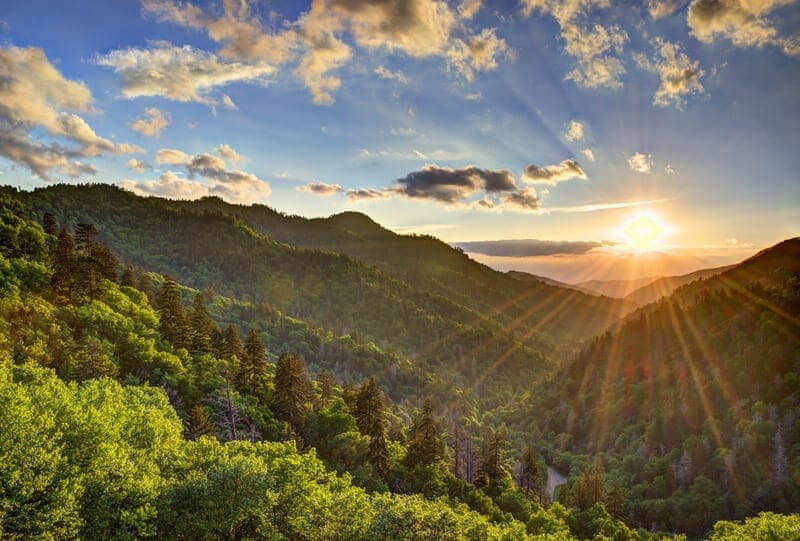The Great Smoky Mountains National Park offers a wide array of plant and animal life with elevations ranging from 875 to 6,643 feet. Over a half a million acres make this idyllic area one of the largest natural areas in the eastern United States. Within the park there are over 270 miles of road, offering drivers access to amazing views and a variety of forest types. Visitors can also stay within the park, either with an RV at one of the 10 frontcountry campgrounds, or the horse campground or backcountry. Hikers might also stay at LeConte Lodge, which is only accessible on foot.
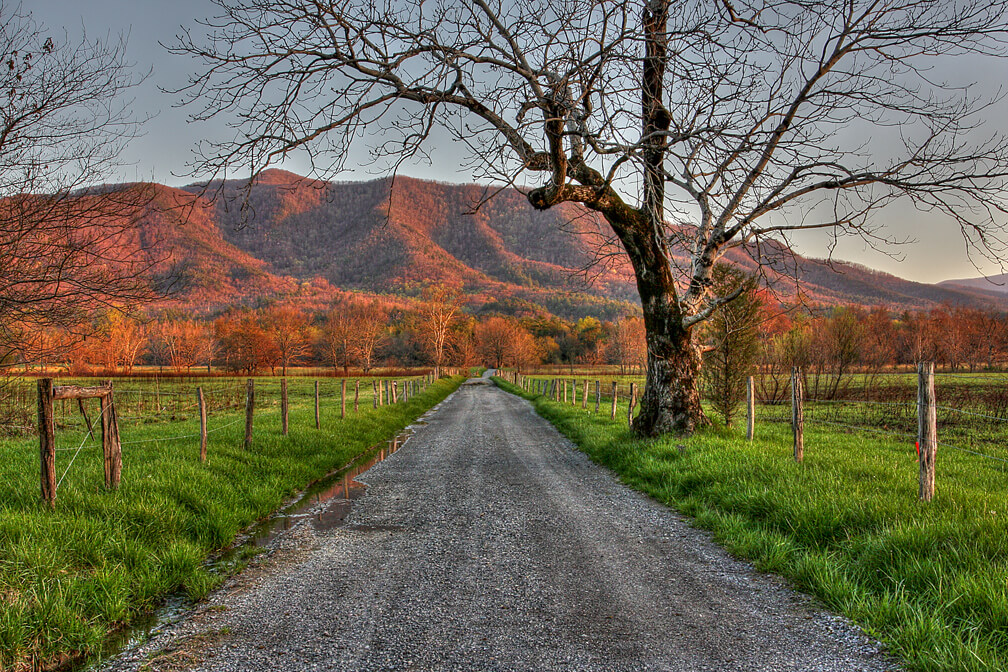
Cades Cove
One of the more well-known areas within the Great Smoky Mountains National Park is Cades Cove. Not only does it provide the perfect backdrop for stunning photo opportunities, but it is home to wildlife that visitors might otherwise rarely see. White-tailed deer and bear are often spotted, but coyote, groundhog, turkey, skunk, and raccoon may also be seen. If you would like to drive through, the 11-mile one-way loop entrance is accessible after 10 a.m. every Saturday and Wednesday morning from early May until late September (and otherwise sunrise until sunset, weather permitting). Hikers and bicyclists have exclusive access before 10 a.m. during those months/times. Bike rentals are available through the Cades Cove Campground Store. Visitors are encouraged to stop in the Visitor Center to pick up grains ground at the historic cable mill next door, jams and jellies, and park maps.
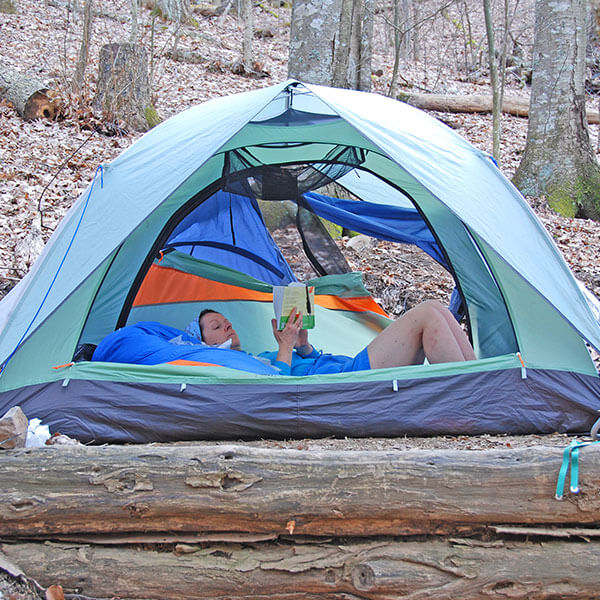
Camping
Campers in Great Smoky Mountains National Park can enjoy backcountry sites (for backpackers), frontcountry and group campsites with cold running water and flush restrooms, or horse camps with hitching posts and primitive camping facilities. Some permits or reservations may be required, call (877) 444-6777 for more information. Remember, only certified, heat-treated firewood may be brought into the park and is available in surrounding communities from park concessioners.
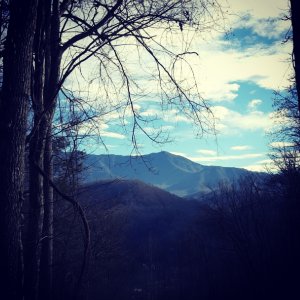
Hiking
Every season offers something different for hikers to experience, from the start of wildflowers blooming and fireflies glowing to the crisp changing of leaves. Pick up a trail map at the park visitor centers and choose your route. Leave with enough time to return before sunset and remember to bring plenty of water, sturdy shoes, and snacks for energy. For a guided hiking experience, explore the park on Friends of the Smokies’ Classic Hike of the Smokies.
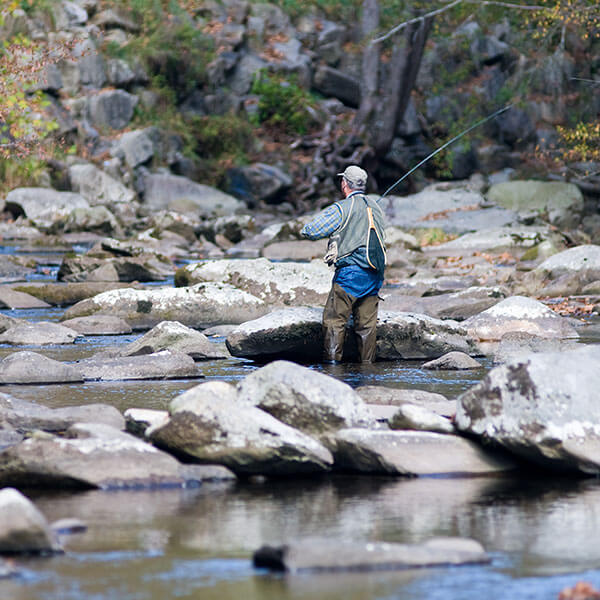
Fishing
Over 2,900 miles of streams are located within the Great Smoky Mountains National Park. You will need a valid fishing license/permit from Tennessee or North Carolina to fish in the park. Fishing is permitted year-round in the park in all streams, but make sure you don’t move any of the rocks in the stream as it’s against the law. Disturbing rocks can disturb aquatic insects and species of fish. Fishing is open from 30 minutes before park sunrise to 30 minutes after park sunset.
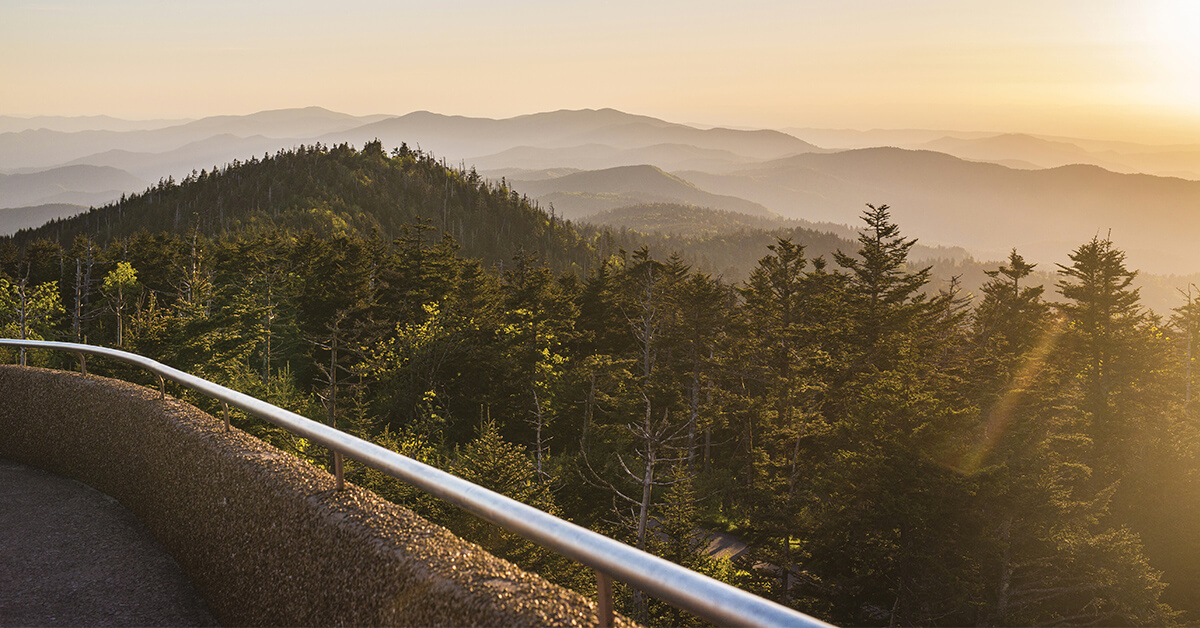
Scenic Drives
You might not be aware of all the sights that you can see from a drive through the Smokies. There are panoramic views from pull-offs, mountain streams that tumble alongside roads, and weathered buildings peeking out from behind trees. Among the nearly 400 miles of road in the park, the best options for a scenic drive are Cades Cove Loop Road, Cataloochee Valley, Newfound Gap Road, Roaring Fork Motor Nature Trail, and Upper Tremont Road.
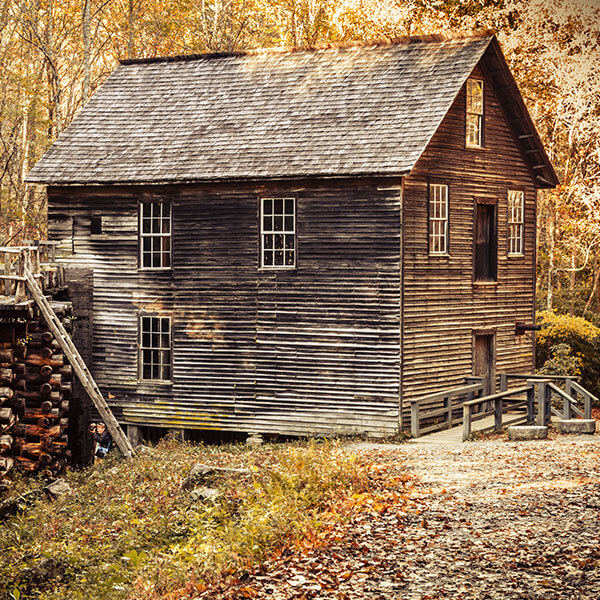
Historic Sites
Over 90 historic structures can be found in the park, either preserved or rehabilitated – log homes, barns, outbuildings, churches, schools, and grist mills. The best places to see them are at Cades Cove, Cataloochee, Oconaluftee, and along the Roaring Fork Motor Nature Trail. You might even discover some of the old homesteads or solitary fireplaces as you journey on trails within the Great Smoky Mountains National Park.
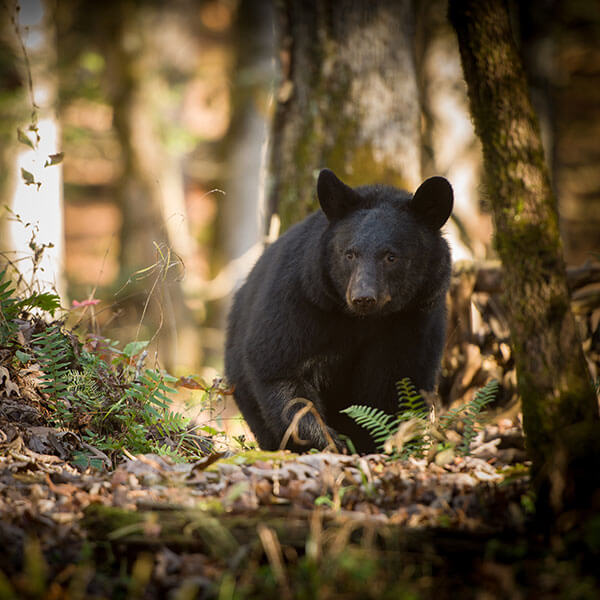
Wildlife
There are plenty of places to spot wildlife, but wide open spaces like Cades Cove and Cataloochee have better opportunities to view black bear, white-tailed deer, turkeys, woodchucks, raccoons, and other animals. By car, the Roaring Fork Motor Trail might allow for black bear visibility. Winter can be easier to see wildlife as the foliage within the forest is less dense. Make sure you bring binoculars and patience! If you spot an animal, don’t approach them or allow them to get close to you.

Picknicking
There are many picnic sites spread out over the Great Smoky Mountains National Park. Picnic pavilions can be rented (prices range from $12.50 to 80, depending on the site and usage) with a credit card or personal check. Most picnic areas are closed in the winter months, with the exceptions being Cades Cove, Deep Creek, Greenbrier, and Metcalf Bottoms.
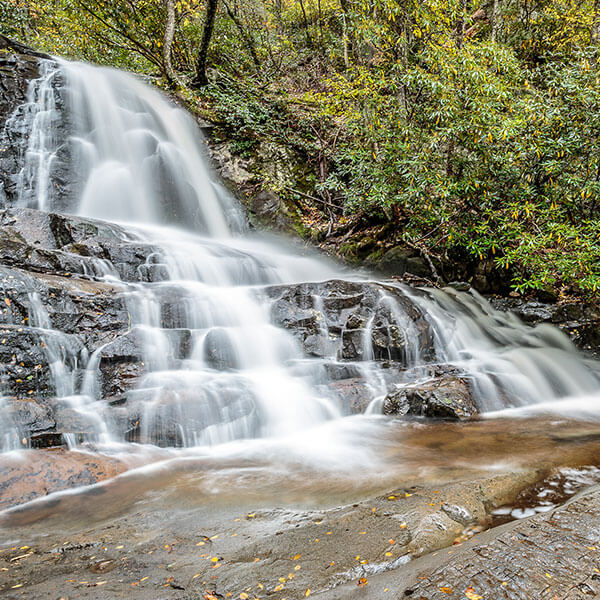
Waterfalls
Waterfalls bring many visitors into the park, but nearly every river and stream has small cascades that can be captured beautifully in photos. High country has more rain and that rainfall trickles down mountains, providing spectacular waterfalls. Some notable waterfalls in the park are Laurel Falls, Ramsey Cascades, and Abrams Falls.



